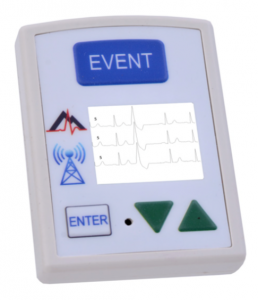A Brief History of Ambulatory ECG Machines: Part 2
 In our last article, we left off our historical tour of Holter history in 2005 with the long-term Holter revolution, extended recording capabilities on a single AA battery, and the DR200. In this innovative recorder, we combined Holter and Event Recorder capabilities and extended the recording time range further than any recorder on the market: 30 days for Event and 14 days for Holter. We also included the first of its kind “BOTH” mode, allowing for simultaneous Holter and Event recording.
In our last article, we left off our historical tour of Holter history in 2005 with the long-term Holter revolution, extended recording capabilities on a single AA battery, and the DR200. In this innovative recorder, we combined Holter and Event Recorder capabilities and extended the recording time range further than any recorder on the market: 30 days for Event and 14 days for Holter. We also included the first of its kind “BOTH” mode, allowing for simultaneous Holter and Event recording.
The point of diminishing returns
Engineers have made recorders smaller and lighter — almost to the vanishing point. In fact, when we ask about the downside of ultra-small recorders on the market these days, the most common complaint we hear is that they indeed get lost all too easily. There is a point of diminishing returns. Nevertheless, the modern era has given rise to a proliferation of Holter form factors, each with its advantages and disadvantages. Cost, patient compliance, recording length, signal fidelity, and signal quality are all factors to consider. In fact, we will cover these in more detail in a future article. For now, suffice it to say that ambulatory ECG engineers have flooded the market with options in all form factors, from traditional ambulatory recorders to a wide array of fancy patch-plus-recorder types of arrangements.
Mobile Cardiac Telemetry (MCT)
One of the more significant trends since 2005 has been leveraging the wider availability of cellular networks to facilitate near-real-time transmission of ECG event signals. Although not ubiquitous, cellular coverage is available in many places, but, believe it or not, there are still large areas in this world without coverage! More important, when it comes to improving patient outcomes, it has been a struggle to justify the additional cost of near-real-time transmission because it requires a cellular data plan. In the USA, Event coverage has another burden — namely the required and costly component of monitoring these transmissions 24/7. The transmissions are, at best, near-real time, given the end-to-end latency in most systems. Even with these near-real-time and costly requirements, the real value in terms of improved patient outcomes has been hard to prove. In a sense, engineers have created a solution to a problem that doesn’t really exist. As interesting as these technologies are, engineers’ attempts to prove value in terms of improved patient outcomes has fallen short.
The one-box or two-box conundrum for mobile cardiac telemetry (MCT) solutions
The systems that can provide MCT or near-real-time ambulatory ECG data fall into two broad categories: one- and two-box solutions. The one-box solution puts the recorder and the cell phone in the same unit. The two-box solution separates those two functions.
One advantage of the one-box solution is, well, exactly that: There is only one box. Another advantage is that, when there is an event, it gets transmitted pretty much at that time — assuming adequate cell coverage. (This is actually a huge assumption.) As far as disadvantages, the single box has to be a larger box, the cell phone antenna is a dangerous source of noise to the sensitive ECG recorder, the battery life is unpredictable based on cellular signal strength, and, thus, the ECG recording time is also unpredictable or dependent on multiple recharge cycles, which the patient must manage. Last but not least, the cost of that single unit has to include the cost of the ECG recorder, cell phone, and data plan — regardless of how the unit is actually deployed. We heard one story of a clever patient who figured out how to use the recorder data plan to stream movies. Interesting, but not so funny if you’ve based your revenue model on the cost of streaming ECG data but someone is streaming video!
DR300 plus Gateway is a flexible, economic solution
At NEMon, after a great deal of analysis, we opted for a two-box solution with the DR300. It was only natural because it falls right in line with our philosophy to offer more flexibility and deployment options to our users. In the NEMon two-box implementation, the cellular portion is moved to the Gateway box. The Gateway box is located where the patient spends a lot of time, e.g., at home or in the office. The DR300 communicates with the Gateway via Bluetooth technology.
The disadvantage of this arrangement is, well, exactly that: There are two boxes.
The cost of the DR300 barely changes when compared to the DR200, so it can still be used economically as a Holter or Event recorder or record both simultaneously when not deployed as an MCT recorder. Not every DR300 must be paired with a Gateway unit, thus allowing users to scale inventory appropriately for their patient mixes.
So there you have it: You’re now up to date with a tour through Holter history in two consecutive issues of your favorite newsletter. We’ll review the Gateway next month.
[cta]We’re looking to you, members of our user community, to help NEMon experts define the new or modified functionality you’d like to see in our products. Tell us by email at info@nemon.com, or call us at 978-461-3992 or toll-free at 866-346-5837 option 2 (U.S. and Canada).For more information about NorthEast Monitoring products and how we can provide you with the best monitoring systems for your business, view this short movie.[/cta]


